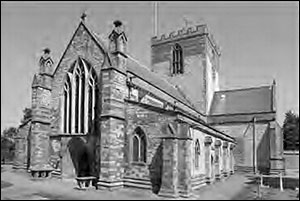|
Eldest son of Owen Owen Rector of Burton Latimer. Christened 13 Nov 1580 at Burton Latimer. Christ’s College Cambridge matric pens 1593/4 BA 1596/7 Fellow Jesus College Cambridge and MA 1600. DD 1618 Taxor 1608. Incorporated At Oxford 16 July 1600. Chaplain to Charles I. Rector of Burton Latimer, instituted 5 Oct 1607, again instituted 8 Jan 1607/8. Comp for F 19 Feb 1607/8. Rector of Carlton 1625 (not Carlton, Northants.) Rector of Cottingham instituted 11 Jan 1624/5. Either this last institution did not take effect or he resigned before 4 Feb 1624/5. Archdeacon and Bishop St Asaph 20 Sept 1629. He held, in addition, several Welsh livings. Died 15 Oct 1651. Buried in his cathedral. He was impeached by Parliament for high treason 1642, imprisoned and sequestered.
Married (1) Sara. Buried 17 Feb. 1621/2 at Burton Latimer
Issue:
1. son John b 25 Nov Christened 28 Nov 1613 at Burton Latimer buried there 13 Feb 1613/4
2. son Owen Christened 29 Sep 1618 at Burton Latimer buried there 29 Oct 1618
3. son Robert Christened 11 Oct 1619 at Burton Latimer. Jesus College Cambridge Adm Fell Com. 29 April 1634 BA 1636/7 Created Bachelor of Civil Law Oxford 3 Dec 1660. Chancellor of St Asaph 1660-1
4. son Hugh Christened 25 Feb 1620/1 at Burton Latimer
1. dau Jane b 2 Sept Christened 6 Sept 1612 at Burton Latimer (1st child) buried there 9 Nov 1612.
2. dau Mary b 2 Oct Christened 9 Oct 1614 at Burton Latimer
3. dau Frances b 10 July Christened 14 July 1616 at Burton Latimer
Married (2) Elizabeth. Buried 28 April 1629 at Burton Latimer
Issue:
4. dau Cecilia Christened 20 Aug 1626 at Burton Latimer buried there 23 Jan 1627/8
5. dau Elizabeth Christened 6 June 1628 at Burton Latimer.
W. Dillingham Rector of Cranford left him 10s 10 Feb 1618/9
Witness to will of T Plowright of Burton Latimer 16 March 1618/9
Trustee of M Newet of Burton Latimer 10 June, 7 Charles I
Witness to will of Hugh Floyd of Barton Seagrave, clerk, who named him as a cousin and trustee 27 May 1629
Names as cousin by Cecilia Floyd of Barton Seagrave widow 15 Aug 1629.
(Reference “Northamptonshire and Rutland Clergy from 1500” (1938-43) by Henry Isham Longden)
John Owen D.D. was baptised at Burton Latimer in November 1580. Like his father Owen Owen he was described as “Clerk and Parson” when he became rector here in 1608, having taken over from his brother-in-law Edward Puleston, he also held several other livings. He and his first two wives, Sarah Hodilow of Cambridge and Elizabeth Gray, had nine children baptised at Burton Latimer, four of whom died and are buried here, as are the two wives. John’s third wife was Elin daughter of Robert Wynn of Conway and there does not seem to have been any issue from this marriage.
In 1629 John Owen left Burton Latimer and was consecrated as Bishop of St. Asaph in North Wales where he did much work on improving the cathedral there. Like his successor at Burton Latimer, Dr Robert Sybthorpe, he was appointed Chaplain to King Charles I but despite this royal appointment he fell foul of the antagonistic elements of the church and state in the crisis of 1640 and the following years leading to the Civil War. In May 1640, he signed the new canons by which the clergy bound themselves to maintain the doctrine and discipline of the Church of England inviolate against the superstitions of Rome on the one hand, and the machinations of the Puritans on the other, and declared that “monarchy was of divine right.” On 27th October 1641, the House of Commons marked its resentment of the action of himself and eleven other bishops by voting their exclusion from Parliament. In December John Owen joined the eleven bishops in signing a letter to the King in which they complained of intimidation while on their way to the House of Lords, and protested against the transaction of business in their absence. The House of Commons caused the twelve bishops to be arrested in anticipation of their impeachment on a charge of high treason and, with nine of his colleagues, he was committed to the Tower of London. He was brought to the bar of the House of Lords in February 1642, but declined to plead. He was released on heavy bail after eighteen weeks imprisonment and was ordered to return to St. Asaph. With the Civil War now gathering pace this was not the time to be a Royalist clergyman and he had to pay a fine of £500 and his estates were sequestered and sold, while St. Asaph’s Cathedral was wantonly desecrated.
John Owen died in the midst of the troubles, at Aberkinsey, in Rhuddlan 16th October 1651 aged 71 years and was buried under the throne in the Cathedral.
|
